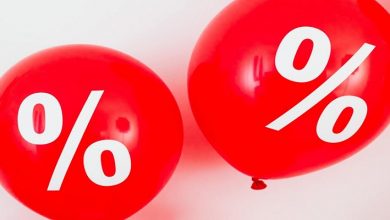
Choosing Between Price Leadership and Price Followership
Price leadership is critical in the price craftsmanship process. It shows why consumers prefer a product that might be overpriced or not prefer products that come with reasonable prices. Besides, price leadership grants insight into the power of pricing, thus showing how businesses can get the upper hand in a rapidly changing market. Learn about price leadership and its difference from price followership.
Speaking about Price Leadership
Price leadership is a concept entailing a seller to set a price as the key benchmark for all other players in the given market. In such a case, a leading price serves as the threshold. It leads the market and establishes the rule of the game for pricing used by different businesses. From a broad perspective, the price leadership concept is rooted in three key pricing models:
- Price leadership.
- The combination of both.
- Price followership.
The price leadership concept is often presented in different variations in such a case. Yet, when illustrating how it works, one can suggest this simple example: the unique product enters the market, and the company offering it sets a special price. Later, if the product works out and other businesses design its alternatives, they will try to match the price of the initial product. The action of the company presenting the new product is price leadership, in this case.
Why a Price Leader Model Is Effective?
In most cases, price leaders are large companies with a firm hand in the given market. In addition, they often have a diverse portfolio of products, experience high turnover, and have effective revenue stream management involved.
Let’s consider the following example when understanding the root of price leadership’s effectiveness. Walmart is a business that can afford to be represented in almost any given market, from large cities to small towns. In such a case, small stores represent Walmart’s only competition in remote locations. At this point, the giant store becomes the price dominant, setting the leading price for the given market. As a result, price leadership is effective because you are setting the pace, which means you get the most customers and can use price more effectively than your competitors. These companies are forced to adjust to your pricing strategy.
Benefits Price Leadership Brings
Knowing the definition of price leadership and the reason it is effective, it is time to speak about its broader range of benefits. In a nutshell, these are advantages to consider:
- The chance to set trends. In a nutshell, price leadership is a great way to set pricing trends within a market, allowing you to define the market landscape for a particular period. What is more, when coupled with product supplies, portfolio transformation plans, and promo campaigns, price leadership grants a significant competitive advantage.
- The ability to follow independent pricing policy. Another key benefit of price leadership is the chance for a price leader to experience an independent pricing policy. You do not need to consider competition when setting a price or care about your rivals’ pricing strategies. It saves many businesses a great deal of time and effort when conducting competitor analysis.
As a result, price leadership comes with the advantages of setting price trends and following independent pricing policies. You are changing the market’s pricing policies and don’t need to use price-based competitor analysis.
Potential Downsides of Price Leadership
Yet, as with any given concept or phenomenon in pricing, there are particular cons involved. Let’s explore several of the possible disadvantages:
- Higher risk of missing a balance-changing event. Being a price leader means you don’t pay too much attention to the competition. In such a case, the potential issue with price leadership is that it can make you miss some market-defining events. For example, a new entrant might present a unique product that will significantly impact your company.
- Potentially negative impact on customer loyalty. Another downside of price leadership is that price leaders are more exposed to competitors. It means that everything a market leader does is in the open and researched by other players. Sometimes, it can harm customer loyalty.
As a result, price leadership is not a silver bullet. Instead, being a price leader means your actions are more exposed to the market and might miss some impactful market-based events.

Putting Price Followership Into the Picture
Throughout many cases of price leadership, the most evident approach stems from price leadership and price followership. In short, while we know about the former, it is time to explore the latter. Simply put, being a price follower means you merely follow the pricing strategy of a price leader. At this point, price followership is the opposite of price leadership.
A Price following can be a great model if your competitor uses a competition-based pricing strategy. In this case, if the company using the model relies solely on competitor data disregarding numerous other factors, there is a space for price followers to exploit such a weakness. You just wait as a price leader will make a bad move, and you will consider the adverse effect of the action taken to develop a pricing strategy that will be much better than the ones used by a dominant market player.
Price Leadership and Price Followership
The best approach is to couple price leadership with price followership. As a price leader, you set price trends and experience an independent pricing policy. However, as a price follower, you do not forget to track various market factors and competitors’ prices to prepare for a potential market-changing event. Essentially, you take the best from both approaches and make the mixture work to your advantage. Therefore, it is crucial not to overestimate your power as a price leader and underestimate the importance of price followership.
The Verdict
Using each model alone does not guarantee the best outcomes. In short, you need to learn from price leadership and price followership to ensure you outperform others and are humble enough to know when the market-changing event is coming.





